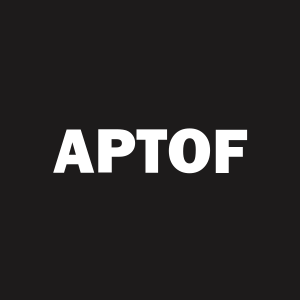Aptose’s Tuspetinib Exceeds Expectations When Combined with Standard of Care Treatment Across Diverse Populations of Newly Diagnosed AML
Rhea-AI Summary
Aptose (OTC: APTOF) reported Phase 1/2 TUSCANY data showing the tuspetinib (TUS) triplet with venetoclax and azacitidine (TUS+VEN+AZA) produced high remission and MRD results in newly diagnosed AML patients ineligible for induction chemotherapy.
Key data: CR/CRh 9/10 (90%) overall, 100% CR/CRh (6/6) at 80/120 mg TUS, 88% CR/CRh (7/8) in FLT3 wildtype, and MRD-negativity 7/9 (78%) of responders. No DLTs, no treatment-related deaths, no QTc prolongation, no differentiation syndrome, and no prolonged myelosuppression reported to date. Dosing at 160 mg TUS has begun; enrollment of 18–24 patients is anticipated by end-2025.
Positive
- CR/CRh 9/10 (90%) overall
- 100% CR/CRh (6/6) at 80 mg and 120 mg TUS
- MRD-negativity 7/9 (78%) of responders
- No DLTs, no treatment-related deaths reported
Negative
- Dataset limited to 10 patients to date
- No long-term durability or survival data reported yet
News Market Reaction 1 Alert
On the day this news was published, APTOF gained 12.50%, reflecting a significant positive market reaction.
Data tracked by StockTitan Argus on the day of publication.
Data from Phase 1/2 TUSCANY trial presented at the European School of Haematology (ESH) 7th International Conference
- Addition of TUS to VEN+AZA achieves CR/CRh responses in all (6/6,
100% ) patients treated at the higher dose levels of 80 mg and 120 mg TUS, exceeding the66% rate expected from VEN+AZA alone
- CR/CRh responses in 7/8 (
88% ) FLT3 wildtype AML, representing70% of AML population
- TUS+VEN+AZA achieves CR/CRh and MRD-negativity in TP53-mutated (2/2), RAS-mutated (1/1) and FLT3-ITD (2/2) AML patients to date
- TUS+VEN+AZA is well tolerated with no DLT, differentiation syndrome, QTc prolongation, or prolonged myelosuppression at any dose level to date in newly diagnosed AML patients
- TUS+VEN+AZA is being developed as a safe and mutation agnostic frontline therapy for AML
- Dosing with 160 mg TUS is now ongoing
SAN DIEGO and TORONTO, Oct. 16, 2025 (GLOBE NEWSWIRE) -- Aptose Biosciences Inc. (“Aptose” or the “Company”) (OTC: APTOF, TSX: APS), a clinical-stage precision oncology company developing the tuspetinib (TUS)-based triple drug frontline therapy to treat patients with newly diagnosed AML, today announced that data from the ongoing TUSCANY trial of tuspetinib in combination with venetoclax and azacitidine (TUS+VEN+AZA) are being presented in a poster presentation, “TUSCANY Study of Safety and Efficacy of Tuspetinib plus Standard of Care Venetoclax and Azacitidine in Study Participants with Newly Diagnosed AML Ineligible for Induction Chemotherapy,” at the European School of Haematology (ESH) 7th International Conference on Acute Myeloid Leukemia “Molecular and Translational”: Advances in Biology and Treatment, being held from October 16-18, 2025 in Estoril, Portugal. Data to date from 10 patients in the TUSCANY trial across all three cohorts, 40 mg, 80 mg or 120 mg TUS dose in TUS+VEN+AZA, reveal promising clinical safety and antileukemic activity and support the use of TUS with standard of care treatment across a broad range of AML populations, including those carrying adverse mutations regardless of FLT3 mutation status.
The TUS+VEN+AZA triplet is being developed as a safe and well-tolerated, mutation agnostic frontline therapy to treat large, mutationally diverse populations of newly diagnosed AML patients who are ineligible to receive induction chemotherapy. Across all dose cohorts to date, no significant safety concerns or dose limiting toxicities (DLTs) have been observed in the TUSCANY trial, including no prolonged myelosuppression in Cycle 1 of subjects in remission, no reports of drug-related QTc prolongation or differentiation syndrome (DS), no CPK elevation and no treatment-related deaths. Dosing has begun at the 160 mg TUS dose level.
“We have observed that TUS can be safely added to a backbone VEN+AZA without needing to reduce the dose of these standard-of-care drugs. The activity we have observed with the TUS triplet in the first 10 patients has exceeded our expectations with 9 achieving complete remissions and 7 demonstrating MRD-negativity by central flow cytometry,” said Rafael Bejar, M.D., Ph.D., Chief Medical Officer of Aptose. “In addition, these remissions are happening in diverse genetic subtypes including those with unmutated FLT3, FLT3-ITD, NPM1c, biallelic TP53 with complex karyotype, RAS, or myelodysplasia related mutations, making this a truly mutation agnostic therapy.”
Data highlights:
- TUS in combination with standard dosing of VEN+AZA has been well tolerated with no DLT, no treatment-related deaths, no differentiation syndrome, no QTc prolongation, no prolonged myelosuppression after remission in Cycle 1, and no CPK elevations reported at any dose levels to date in these newly diagnosed AML patients.
- Addition of TUS to VEN+AZA achieved CR/CRh responses in 6/6 (
100% ) patients treated at the higher dose levels of 80 mg and 120 mg TUS, exceeding the66% rate expected from VEN+AZA alone.
- Overall, TUS+VEN+AZA CR/CRh responses were observed in 9/10 (
90% ) patients.
- 7 of 8 (
88% ) CR/CRh responses in FLT3 wildtype AML, representing70% of AML population.
- TUS+VEN+AZA MRD-negativity noted in 7/9 (
78% ) responding patients by central flow cytometry.
- CR/CRh responses achieved across diverse mutational subtypes including: unmutated FLT3, FLT3-ITD, NPM1c, biallelic TP53 with complex karyotype, RAS, and myelodysplasia related mutations.
- Dosing at the TUS 160 mg dose level is now ongoing.
See the ESH poster presentation here.
TUSCANY: TUS+VEN+AZA Triplet Phase 1/2 Study
The tuspetinib-based TUS+VEN+AZA triplet therapy is being advanced in the TUSCANY Phase 1/2 trial with the goal of creating an improved frontline therapy for newly diagnosed AML patients that is active across diverse AML populations, durable, and well tolerated.
The TUSCANY triplet Phase 1/2 study, being conducted at 10 leading U.S. clinical sites by elite clinical investigators, is designed to test various doses and schedules of TUS in combination with standard dosing of AZA and VEN for patients with AML who are ineligible to receive induction chemotherapy. A convenient, once daily oral agent, TUS is being administered in 28-day cycles. Multiple U.S. sites are enrolling in the TUSCANY trial with anticipated enrollment of 18-24 patients by the end of 2025. Data will be released as it becomes available.
More information on the TUSCANY Phase 1/2 study can be found on www.clinicaltrials.gov (here).
About Aptose
Aptose Biosciences is a clinical-stage biotechnology company committed to developing precision medicines addressing unmet medical needs in oncology, with an initial focus on hematology. The Company’s lead clinical-stage, oral kinase inhibitor tuspetinib (TUS) has demonstrated activity as a monotherapy and in combination therapy in patients with relapsed or refractory acute myeloid leukemia (AML) and is being developed as a frontline triplet therapy in newly diagnosed AML. For more information, please visit www.aptose.com.
Forward Looking Statements
This press release may contain forward-looking statements within the meaning of Canadian and U.S. securities laws, including, but not limited to, statements relating to the therapeutic potential and safety profile of tuspetinib (including the triplet therapy) and its clinical development, goals, the anticipated enrollment rate in the TUSCANY trial and the timing thereof, as well as statements relating to the Company’s plans, objectives, expectations and intentions and other statements including words such as “continue”, “expect”, “intend”, “will”, “should”, “would”, “may”, and other similar expressions. Such statements reflect our current views with respect to future events and are subject to risks and uncertainties and are necessarily based upon a number of estimates and assumptions that, while considered reasonable by us are inherently subject to significant business, economic, competitive, political and social uncertainties and contingencies. Many factors could cause our actual results, performance or achievements to be materially different from any future results, performance or achievements described in this press release. Such factors could include, among others: our ability to obtain the capital required for research and operations and to continue as a going concern; the inherent risks in early stage drug development including demonstrating efficacy; development time/cost and the regulatory approval process; the progress of our clinical trials; our ability to find and enter into agreements with potential partners; our ability to attract and retain key personnel; changing market conditions; inability of new manufacturers to produce acceptable batches of GMP in sufficient quantities; unexpected manufacturing defects; and other risks detailed from time-to-time in our ongoing quarterly filings, annual information forms, annual reports and annual filings with Canadian securities regulators and the United States Securities and Exchange Commission.
Should one or more of these risks or uncertainties materialize, or should the assumptions set out in the section entitled “Risk Factors” in our filings with Canadian securities regulators and the United States Securities and Exchange Commission underlying those forward-looking statements prove incorrect, actual results may vary materially from those described herein. These forward-looking statements are made as of the date of this press release and we do not intend, and do not assume any obligation, to update these forward-looking statements, except as required by law. We cannot assure you that such statements will prove to be accurate as actual results and future events could differ materially from those anticipated in such statements. Investors are cautioned that forward-looking statements are not guarantees of future performance and accordingly investors are cautioned not to put undue reliance on forward-looking statements due to the inherent uncertainty therein.
For further information, please contact:
Aptose Biosciences Inc.
Susan Pietropaolo
Corporate Communications & Investor Relations
201-923-2049
spietropaolo@aptose.com







